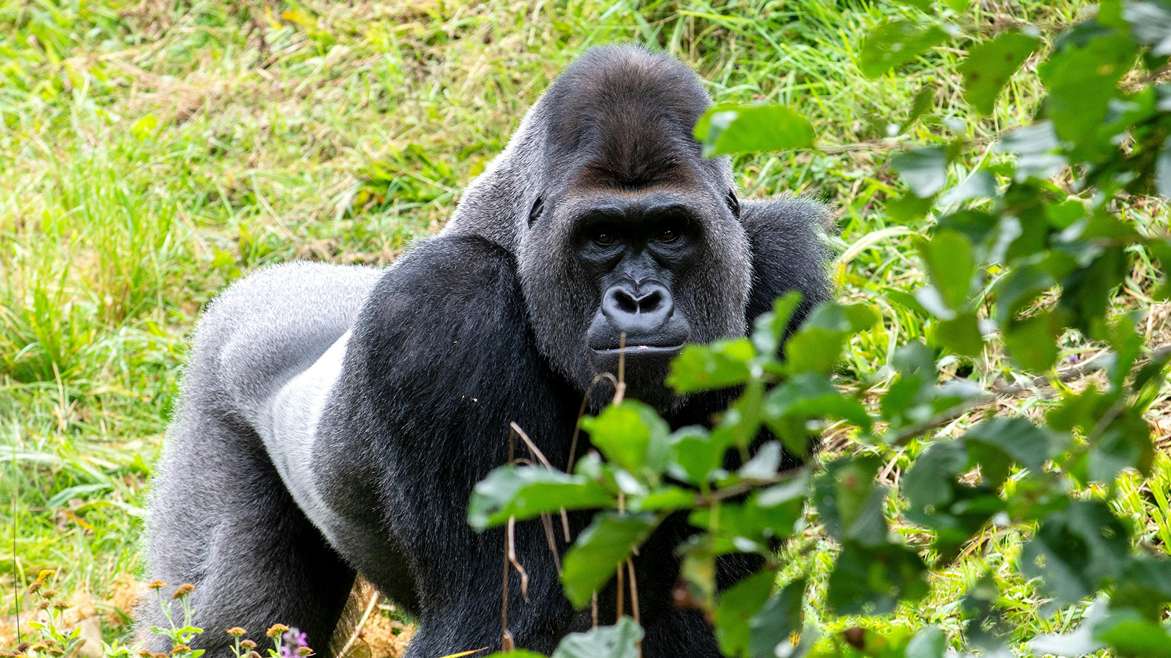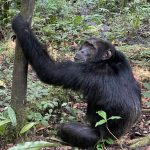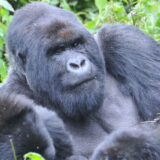A Complete Guide to Gorilla Trekking Groups in Uganda
Uganda is home to almost half of the world’s remaining mountain gorillas, primarily in two protected areas: Bwindi Impenetrable National Park and Mgahinga Gorilla National Park. These forests offer visitors a rare opportunity to observe these endangered primates in their natural habitat, an experience that combines adventure, conservation, and awe.
The appeal of gorilla trekking lies in encountering the majestic apes up close and understanding their complex social structures, behaviours, and environment. Unlike zoo experiences or safari sightings from afar, gorilla trekking allows for a close, intimate experience, often within just a few meters of a gorilla family.
For many, trekking through dense forests to find a gorilla family in the wild is a once-in-a-lifetime adventure but also an essential contribution to conservation. This guide teaches you about the types of gorilla trekking groups, logistics, and what to expect, allowing you to plan a rewarding and responsible journey into the heart of Uganda’s primate world.
Gorilla Trekking Destinations in Uganda
Uganda’s two primary gorilla trekking destinations—Bwindi Impenetrable National Park and Mgahinga Gorilla National Park—are renowned for their gorilla populations and unique landscapes, flora, and fauna. Each offers a distinct trekking experience, with varying terrains, gorilla family groups, and forest ecosystems.
Bwindi Impenetrable National Park
Bwindi Impenetrable National Park, situated in southwestern Uganda, is the country’s most famous gorilla trekking site and is home to roughly 460 mountain gorillas, nearly half of the world’s population. The park’s landscape is a dense, ancient rainforest spread over steep ridges and valleys, earning it the name “Impenetrable.” With an area of 331 square kilometres, Bwindi’s altitude ranges from 1,160 to 2,600 meters, contributing to a rich biodiversity that includes 120 mammal species, 350 bird species, and countless unique plant types.
Bwindi is divided into four central trekking regions: Buhoma, Ruhija, Rushaga, and Nkuringo. Each region provides access to habituated gorilla families, allowing visitors to observe gorillas nearby. Buhoma, the most popular area, offers the most accessible access and a range of lodges, making it ideal for trekkers seeking a more accessible experience. Rushaga and Nkuringo, on the other hand, are known for their challenging trails and offer an experience for those seeking a more rigorous trek through dense forests and rugged terrain.
Beyond gorilla trekking, Bwindi offers additional attractions such as bird-watching and guided nature walks that introduce visitors to the forest’s rich ecosystems and medicinal plants. The park also offers cultural experiences with the Batwa, an Indigenous pygmy group that once lived in these forests, giving trekkers a chance to learn about their history and traditions.
Mgahinga Gorilla National Park
Mgahinga Gorilla National Park, located on Uganda’s southwestern tip, is part of the Virunga Mountains, a volcanic range that spans Uganda, Rwanda, and the Democratic Republic of Congo. While smaller than Bwindi at 33.7 square kilometres, Mgahinga offers an equally breathtaking experience. It is Uganda’s only park in the Virungas, featuring three extinct volcanoes—Mount Gahinga, Mount Muhabura, and Mount Sabyinyo—that provide a dramatic backdrop for trekking.
Mgahinga is home to one habituated gorilla family, the Nyakagezi group. This smaller group is more straightforward to track within the park and often crosses borders into neighbouring Rwanda and DRC, contributing to the area’s international conservation efforts. Trekking in Mgahinga is unique due to its varied altitudes and open bamboo forests, different from Bwindi’s dense jungle.
Aside from gorilla trekking, Mgahinga offers the chance to see golden monkeys, another endangered primate that shares this environment. There are also options for volcano climbing, hiking, and cultural experiences with the Batwa people. The park’s scenic volcanic landscape, diverse wildlife, and cultural connections make it a captivating choice for those seeking adventure and cultural immersion.
Understanding Gorilla Families and Trekking Groups
Gorilla families are intricate social units, each consisting of a dominant male (known as a silverback), several females, and their offspring. Observing a gorilla family in the wild offers a rare glimpse into complex primate behaviour, from social interactions and hierarchy to communication and bonding. In Uganda, each habituated gorilla family is monitored and managed to ensure both the safety of the gorillas and the quality of the trekking experience for visitors.
Gorilla Family Structure and Behavior
Mountain gorillas are highly social creatures, and each family follows a well-defined structure with a silverback at the helm. The silverback protects the group, mediates conflicts, and guides movements through the forest. Female gorillas in the family form close bonds with the silverback and are primarily responsible for raising young gorillas. Juvenile and young adult males, often called “blackbacks,” usually leave the group to form or join other families once they reach maturity.
In Uganda’s trekking parks, each family has its unique characteristics. Some families are larger and more active, while others may be quieter or more reserved. Certain families have become particularly accustomed to human presence (a process known as habituation), which enables trekkers to observe their behaviours closely and without causing undue stress to the animals. Uganda offers a selection of these habituated families for trekking, each typically accommodating one group of up to eight visitors per day.
The Organization of Trekking Groups
Gorilla trekking groups are carefully organised and limited to ensure minimal impact on the gorillas and their environment. Each day, licensed guides and rangers assign visitors to a specific family based on their fitness level, trekking experience, and sometimes their interests. For example, those seeking a more physically demanding trek might be paired with gorilla families in less accessible regions. In contrast, others may be assigned to groups closer to trailheads for a shorter trek.
The number of visitors allowed to visit each family is strictly limited to reduce the likelihood of disease transmission and disturbance. Only one daily group can see each family, with a maximum of eight people in each trekking group. This limited access preserves the gorillas’ natural behaviours and makes the experience more intimate and rewarding for trekkers.
Why Group Structure Matters for Trekkers
Understanding gorilla family dynamics and the structure of trekking groups is essential to setting realistic expectations for the trek. Some families are more accustomed to human observers and may be less intimidated, allowing visitors closer proximity, while others may be more reserved. Guides are well-versed in each family’s characteristics, ensuring that trekkers are matched with families that provide a suitable and enjoyable experience. Additionally, the guides offer insights into individual gorillas’ social interactions and personalities, enriching the experience with context and knowledge about the group’s history and behaviours.
How Gorilla Trekking Groups Are Formed
Gorilla trekking groups in Uganda are carefully organised to maximise the visitor experience and the welfare of the gorillas. Each group is based on the fitness levels, trekking preferences, and personal interests of the trekkers, as well as the characteristics of the specific gorilla family they’ll visit. The group formation process is practical and strategic, aimed at maintaining a controlled, respectful environment in line with conservation standards.
Group Size and Regulations
Trekking groups are strictly limited in size to reduce the potential impact on gorilla families. A maximum of eight visitors is allowed per gorilla family per day, ensuring minimal disturbance and a more intimate viewing experience. Smaller groups prevent excessive noise, minimise stress on the gorillas, and reduce the likelihood of disease transmission. Additionally, each group is accompanied by experienced guides and rangers who monitor visitors and gorillas to ensure that all safety protocols and wildlife guidelines are followed.
This limited group size also enables a more immersive experience for trekkers, as fewer people in a group can lead to more personalised interactions with the guide and a closer view of gorilla behaviours without crowding.
Assigning Groups Based on Fitness Levels
One of the primary considerations in forming trekking groups is the physical fitness of the participants. Gorilla trekking can range from mild to strenuous, depending on the location of the gorilla family within the forest. Park officials assess the conditions and likely distances to reach various gorilla families daily, allowing them to assign visitors to groups that match their physical capabilities.
For those with a higher level of fitness and a preference for adventure, trekking groups are formed to visit gorilla families in more remote areas, which may require a longer and more challenging hike. Visitors who prefer a less demanding trek are paired with gorilla families closer to accessible trails. This careful grouping allows visitors of all ages and fitness levels to enjoy the experience without compromising safety or enjoyment.
Matching Interests and Gorilla Family Characteristics
While physical considerations are a priority, the interests and expectations of the trekkers are also factored into group assignments. Different gorilla families have distinct characteristics, such as family size, social behaviours, and group dynamics. Some families are larger, more active, or have unique social interactions, making them especially appealing to those interested in observing specific behaviours or family dynamics.
Guides often share insights about each gorilla family’s history and personality traits, helping visitors understand what to expect. This allows trekkers with specific interests—such as observing playful juveniles or larger groups—to be matched accordingly, enhancing the overall experience.
The Role of Guides and Rangers
Once groups are formed, each trekking group is led by an experienced guide and accompanied by armed rangers who ensure the safety of both trekkers and gorillas. Guides are trained in gorilla behaviour, forest navigation, and visitor management, ensuring everyone remains safe and comfortable during the trek. They are also responsible for enforcing the guidelines, such as keeping a safe distance and limiting noise, to ensure that visitors’ presence does not disrupt the gorillas’ natural behaviours.
Guides also play a crucial role in enhancing the trek’s educational value. They share insights into the forest’s ecology, gorilla family dynamics, and conservation efforts, providing a richer understanding of the trek’s significance and its impact on conservation.
In Uganda, forming trekking groups is a logistical task and thoughtful process that respects the needs of both visitors and gorillas. Through this careful approach, Uganda’s gorilla trekking program achieves a delicate balance between offering an unforgettable experience and protecting these endangered primates in their natural habitat.
Gorilla Trekking Etiquette: Dos and Don’ts
When trekking to see gorillas in Uganda, following established etiquette is crucial for both the safety of the gorillas and the visitors. These guidelines help to protect the health and well-being of the endangered gorilla populations while ensuring visitors have a respectful and memorable experience.
Key Dos of Gorilla Trekking
- Maintain a Safe Distance: Trekkers should stay at least 7 meters (about 23 feet) away from the gorillas. This distance protects gorillas from potential disease transmission and reduces stress caused by close human proximity.
- Stay Quiet and Move Slowly: Gorillas are sensitive to sudden movements and loud noises. Keeping calm, moving slowly, and remaining quiet helps the gorillas feel at ease, allowing trekkers to observe natural behaviours.
- Follow Guide Instructions: The guides and rangers are experts on gorilla behaviour and know how to handle different situations. Trekkers should follow their directions closely for both safety and optimal viewing opportunities.
- Wear Neutral-Colored Clothing: Dark, neutral colours blend in with the forest surroundings, minimising visual disruption for the gorillas. Bright colours can be distracting, while camouflage clothing is discouraged as it is reserved for military use in Uganda.
- Practice Good Hygiene: Trekkers should sanitise their hands before beginning the trek, and anyone feeling unwell is encouraged to reconsider the trek to prevent the risk of disease transmission to the gorillas, who are susceptible to human illnesses.
Important Don’ts of Gorilla Trekking
- Do Not Touch the Gorillas: Even if gorillas come close, touching them is strictly prohibited. This rule protects the health of both visitors and the gorillas and maintains natural boundaries.
- Avoid Eating, Drinking, or Smoking Near the Gorillas: Consumption of food or beverages is not permitted near gorillas, as it can attract them and increase the risk of disease transmission.
- Do Not Use Flash Photography: Flash can startle gorillas and disrupt their natural behaviour. Visitors are advised to turn off the flash on their cameras and phones for respectful and safe photography.
- Do Not Make Eye Contact with Dominant Silverbacks: Staring directly into the eyes of a silverback can be perceived as a threat. Trekkers should avoid direct eye contact with the dominant male to show respect and avoid unintentional challenges.
- Avoid Littering: Preserving the gorillas’ natural habitat is essential, and littering is strictly prohibited. Trekkers are asked to return all waste and leave no trace in the forest.
Conservation-Driven Etiquette
The guidelines for gorilla trekking go beyond mere protocol—they are rooted in a commitment to conservation and respect for these endangered primates. Visitors are briefed on these dos and don’ts before the trek begins, helping to create an experience that supports the well-being of gorilla populations and their environment.
By adhering to these etiquette practices, trekkers contribute to sustainable wildlife tourism in Uganda, ensuring that future generations of humans and gorillas can continue to enjoy and benefit from these encounters. Responsible behaviour in gorilla trekking fosters a meaningful connection with these remarkable animals while supporting ongoing conservation efforts.



